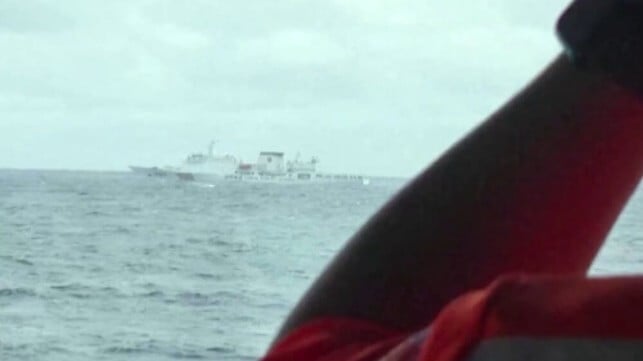China’s Navy Swarms the First Island Chain

China’s Naval Maneuvers Raise Tensions in East Asia
Recent developments in East Asia have heightened tensions, particularly between China and Taiwan. According to Taiwan’s defense ministry, China’s military has deployed its largest fleet of naval and coast guard vessels in the region in three decades. This unprecedented show of force comes amid a surge of military activity that has not been seen in years. While no official maritime drills have been announced, the scale of the maneuvers suggests a significant escalation in China’s military posture. The waters involved stretch between Japan, Taiwan, the Philippines, and the South China Sea, extending further into the Pacific. This situation has prompted Taiwan to place its military on high alert, signaling a potential shift in the balance of power in the region.
China’s Military Operations and Strategic Implications
The People’s Liberation Army (PLA) has declared seven zones for aviation drills just off the coast of the Chinese mainland. These drills coincide with increased airborne patrols near Taiwanese airspace, particularly to the north of the island. Reports indicate that nearly 90 Chinese government vessels, including both Coast Guard and PLA Navy ships, have been spotted along the first island chain. Hsieh Jih-sheng, an intelligence official from Taiwan’s defense ministry, noted that China has established two cordons: one within the First Island Chain and another further out in the Pacific. This strategy effectively blocks areas that U.S. reinforcements would need to transit, sending a clear message about China’s intentions in the Taiwan Strait. Hsieh emphasized that this maneuver aims to make the Taiwan Strait appear as an internal sea for China, which could have serious implications for regional security.
The scale of this operation surpasses any previous Taiwan-centered war games conducted by the PLA in recent years. Unusually, the forces deployed include units from both the PLA Northern and Southern Theater Commands, rather than solely from the Eastern Theater Command. This broad mobilization indicates a coordinated effort to project power and influence across a wider area. Sun Li-fang, a spokesman for Taiwan’s defense ministry, expressed concern, stating that even without announced drills, the presence of these forces poses a significant threat to Taiwan. The situation remains fluid, and the potential for miscalculation or conflict is high as both sides navigate this complex military landscape.
International Reactions and Future Prospects
The international community is closely monitoring the situation, especially given the recent goodwill tour by Taiwanese President Lai Ching-te. His visit included stops in Pacific nations and a rare phone call with U.S. House Speaker Mike Johnson. Such interactions are viewed by China as provocations, leading to heightened tensions. Beijing has reacted angrily to any recognition of Taiwan’s independent government, viewing it as a direct affront to its sovereignty. The ongoing military maneuvers by China are likely a response to these diplomatic developments, as the Chinese government seeks to assert its dominance in the region.
As the situation evolves, the potential for conflict remains a pressing concern. The deployment of Chinese naval forces and the establishment of strategic cordons could lead to increased confrontations in the Taiwan Strait. The U.S. and its allies may need to reassess their military strategies in response to China’s assertive actions. The delicate balance of power in East Asia is at a critical juncture, and the decisions made by both China and Taiwan in the coming weeks will be crucial in determining the region’s future stability.
